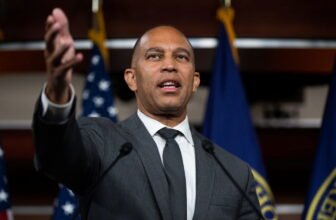
September 10, 2025
The rate among Black homeowners fell to 43.9% in the second quarter, down from 45.3% a year earlier.
New data from the real estate platform Redfin shows a drop in Black homeownership rates, the lowest level since 2021. The rate among Black homeowners fell to 43.9% in the second quarter, down from 45.3% a year earlier. It’s the most significant year-over-year decline since the third quarter of 2021.
When comparing the numbers, the rate for Hispanic homeownership has increased slightly to 48.8% from 48.5% the previous year. There were slight declines in both the non-Hispanic white homeownership rate (from 74.4% to 74%) and the Asian/Native Hawaiian/Pacific Islander homeownership rate (from 62.8% to 62.1%).
What’s Driving The Drop In Black Homeownership Rates?
There is a direct correlation between the unemployment rate and homeownership among Black Americans. The Black unemployment rate spiked in 2025, rising to 7.2% as of July 2025, up from 6.3% the previous year. It’s the highest level of unemployment for Black Americans since October 2021.
“Rising unemployment is one likely reason the homeownership rate for Black families has dropped recently,” said Redfin Chief Economist Daryl Fairweather. “The recent wave of federal layoffs hit Black households badly because government jobs have historically been an avenue of upward mobility for Black workers.”
Fairweather also notes that the dismantling of DEI programs in workplaces across the private and public sectors is also affecting Black Americans. As a result of eliminating DEI initiatives, companies are hiring or promoting fewer Black employees.
At the same time, unemployment rates for other groups remained relatively steady, with the Hispanic/Latino unemployment rate decreasing to 5% from 5.3%. The white unemployment rate decreased to 3.7% from 3.8%, and the Asian unemployment rate increased to 3.9% from 3.7%.
Mortgage Rates Improving
While there has been some uncertainty among homeowners due to rising home prices, high mortgage rates, and economic uncertainty, there is some hope for homeowners. The average 30-year fixed mortgage rate has fallen below 6.5% from a peak of over 7% at the start of the year.
“Behind the decline in Black homeownership are families who aren’t building stability and wealth through housing,” said Fairweather. “For Black households who feel locked out of the American dream, the good news is that affordability is improving as mortgage rates come down, home prices are growing at less than half the pace they were a year ago, and buyers have been gaining negotiating power.”
Hopeful homeowners who are not sure if they can afford a home should seek homebuyer assistance programs, as many people may qualify. In Washington State, for example, some programs offer homebuying assistance to those who faced housing discrimination in the early to mid-20th century and their descendants.
RELATED CONTENT: The Unspoken Divide: Morayo Afolabi-Brown Reveals Nigerian Parents’ U.S. Directives That Encourage Division With Black Americans






